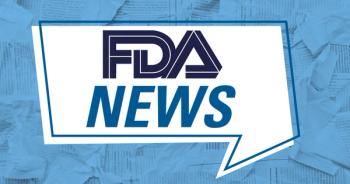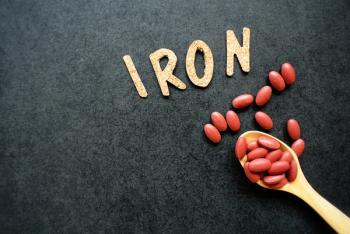
- Vol 65 No 2
- Volume 65
- Issue 02
Progestins for AUB in women at risk of VTE
These four patient cases can help improve your decision-making about the best hormonal regimen for this population.
Abnormal uterine bleeding (AUB) is common among premenopausal women.
Incidence of VTE in women of childbearing age is 1 to 10 in 10,000 yearly.
Patient #1: LNG-IUS
A 25-year-old G0P0 with systemic lupus erythematosus (SLE) and positive anti-phospholipid antibodies presents to discuss management of heavy periods, a hemoglobin of 10.5 g/dL and a need for contraception. She denies a personal or family history of VTE. The woman doesn’t remember to take her other medications regularly and desires an option that lightens her cycle, while also providing longer-term effective contraception.
You counsel your patient that the Centers for Disease Control and Prevention Medical Eligibility Criteria (CDC-MEC)1 guidelines characterize the LNGIUS as category 3 (risks generally outweigh benefits) in patients with SLE and positive antiphospholipid antibodies. However, you also educate her that citations behind the MEC recommendation are mostly based on a theoretical risk of VTE rather than studies of LNG-IUS use in her specific situation. Based on this patient’s positive antiphospholipid antibodies, the MEC guidelines recommend only one option for her: the copper IUD;
Literature
The LNG-IUS is available in several versions, with its active progestin component levonorgesterol ranging from 13.5 to 52 mg. With use of the device, the stable plasma level of levonorgestrel is at most approximately 3% of the level seen with a levonorgestrel-containing combination oral contraceptive (COC) pill.
Multiple studies have evaluated use of the 52-mg LNG-IUS and VTE risk in a low-risk population.
The relationship between the 52-mg LNG-IUS and VTE risk also has been evaluated in populations at higher VTE risk. A 2016 systematic review included nine studies of the the device in high-risk women with SLE, hypertension, smoking, thrombophilia, and history of VTE. The study concluded that there was no statistically significant increased risk of VTE in women using the 52-mg LNG-IUS in these high-risk populations.
Patient #2: DMPA
A 21-year-old G0P0 presents with amenorrhea for 6 months using intramuscular (IM) DMPA, which was started for menorrhagia. She is not sexually active and tells you she “doesn’t want a foreign object in my body.” Her friend was recently diagnosed with deep vein thrombosis after a car accident and leg fracture. Although your patient doesn’t have any other personal risk factors for VTE, she is concerned about her own VTE risk on an upcoming trip while using DMPA.
You counsel your patient that a meta-analysis that found no increased VTE risk with other progestin-only agents did find a doubling in VTE risk with DMPA use.
Literature
Injectable DMPA is FDA-approved for prevention of pregnancy at a dose of 150 mg IM every 3 months.
A 2012 Dutch metaanalysis in women at low risk of VTE found no increased risk of VTE among overall users of a progestin-only contraceptive compared to non-users (relative risk 1.03; 95% CI 0.76 to 1.39). Importantly, the subgroup analysis of DMPA users demonstrated that, unlike other progestin-only options like the LNG-IUS and norethindrone, DMPA was associated with a doubling in VTE risk compared to that in non-users of hormones (relative risk 2.67; 95% CI 1.29 to 5.53).
Two studies assessed VTE risk with DMPA use in populations at higher VTE risk. The first found a trend toward an increased risk of VTE in smokers using DMPA (OR 7.0; 95% CI 0.4–138) compared to smokers not using hormones (OR 1.3; 95% CI 0.97–1.6), however, the confidence intervals were wide and the results were not statistically significant.
Patient #3: Norethindrone acetate
A 41-year-old G3P3 with a tubal ligation, migraine with aura, depression, and VTE during her third pregnancy presents to the Emergency Department with regular heavy menstrual bleeding. She has been bleeding for 5 days and is hemodynamically stable with moderate continued bleeding and a hemoglobin of 9.2 g/dL.
You counsel your patient that due to her migraine with aura and history of VTE, estrogen-containing medications are not an option for her (MEC category 4, unacceptable health risk with method).4 However, for a rapid response and amenorrhea, contraceptive dosing of progestins may not be adequate. Available evidence shows that contraceptive doses of norethindrone acetate (0.35 mg) do not increase VTE risk. However, VTE data on higher doses of norethindrone acetate 2.5 mg to 15 mg commonly used for AUB
Literature
Norethindrone acetate is FDA-approved for contraception at a dose of 0.35 mg, and for secondary amenorrhea, endometriosis, and AUB at a dose of 5 to 15 mg.
Several large studies on norethindrone acetate 0.35 mg used for contraception conclude that there is no increased risk of VTE with this dose.
Oral medroxyprogesterone acetate is also used for AUB management at a dose of 5 to 10 mg, and is an option in this scenario. Little research has been done on VTE risk with oral medroxyprogesterone in premenopausal woman. A single relevant study was identified that included low-risk patients taking oral Provera; there was no association between VTE and progestin-only agents including oral medroxyprogesterone acetate, however, the size was small.
Patient #4: Megestrol acetate
DD is a 52-year-old G2P2 obese, perimenopausal hypertensive and diabetic woman with irregular heavy bleeding. You perform an in-office endometrial biopsy, which demonstrates disordered proliferative endometrium. She is started on norethindrone acetate 5 mg daily, increased to 15 mg, however, she continues to bleed heavily.
You counsel your patient that some data, mostly from small studies in patients with active malignancy using MA in varying doses, did show a small increased VTE risk. However, these study populations are at inherently higher risk for VTE and may not be representative of this woman’s personal risk. There is very limited research on megestrol acetate for AUB.
Literature
Megestrol acetate is FDA-approved in doses of 40 to 320 mg/day for palliative treatment of advanced carcinoma of the breast or endometrium and treatment of cachexia in patients with AIDS.
Megestrol acetate is clinically used off-label for AUB, however, there are few data on this use. A retrospective chart review of 49 patients with AUB suggested efficacy of megestrol acetate in decreasing mean days of bleeding.
Conclusions
This review demonstrates the complexities of treating women with progestins for AUB. Shared decision-making between clinicians and their patients is indicated using the available data. The current data, clinical use, and expert opinion are often contradictory. This highlights the need for additional research on VTE risk of progestins used for management of AUB, especially in the context of other common risk factors for VTE, such as obesity, older age, and smoking.
References:
- Committee on Practice Bulletins-Gynecology. Practice bulletin no. 128: diagnosis of abnormal uterine bleeding in reproductive-aged women. Obstet Gynecol. 2012 Jul;120(2):197-206.
.
- Eichinger S, Evers JLH, Glasier A, et al.Venous thromboembolism in women: a specific reproductive health risk. Hum Reprod Update 2013;19:471-482.
- Trenor CC 3rd, Chung RJ, Michelson AD, et al.Hormonal contraception and thrombotic risk: a multidisciplinary approach. Pediatrics 2011;127:347-357.
- Curtis KM, Tepper NK, Jatlaoui TC, et al.U.S. Medical Eligibility Criteria for Contraceptive Use, 2016. MMWR Recomm Rep2016;65:1-103.
- Cardiovascular disease and use of oral and injectable progestogen-only contraceptives and combined injectable contraceptives. Results of an international, multicenter, case-control study. World Health Organization Collaborative Study of Cardiovascular Disease and Steroid Hormone Contraception. Contraception 1998;57(5):315-324.
- US Food and Drug Administration. Levonorgestrel-releasing intrauterine system.
https://www.accessdata.fda.gov/drugsatfda_docs/label/2008/021225s019lbl.pdf .
- Gaspard UJ, Romus MA, Gillain D, Duvivier J, Demey-Ponsart E, Franchimont P. Plasma hormone levels in women receiving new oral contraceptives containing ethinyl estradiol plus levonorgestrel or desogestrel. Contraception 1983;27:577-590.
- Lidegaard Ã, Løkkegaard E, Svendsen AL, Agger C. Hormonal contraception and risk of venous thromboembolism: national follow-up study. BMJ2009;339:b2890.
- Tepper NK, Whiteman MK, Marchbanks PA, James AH, Curtis KM. Progestin-only contraception and thromboembolism: A systematic review. Contraception 2016;94:678-700.
- Mantha S, Karp R, Raghavan V, Terrin N, Bauer KA, Zwicker JI. Assessing the risk of venous thromboembolic events in women taking progestin-only contraception: a meta-analysis. BMJ 2012;345:e4944.
- Gialeraki A, Valsami S, Pittaras T, Panayiotakopoulos G, Politou M. Oral Contraceptives and HRT Risk of Thrombosis. Clin Appl ThrombHemost 2018;24:217-225.
- US Food and Drug Administration. Depo-provera.
https://www.accessdata.fda.gov/drugsatfda_docs/label/2010/020246s036lbl.pdf.
- US Food and Drug Administration. Oral provera. US Food and Drug Administration.
https://www.accessdata.fda.gov/drugsatfda_docs/label/2007/011839s071lbl.pdf.
- Bergendal A, Persson I, Odeberg J, et al.Association of venous thromboembolism with hormonal contraception and thrombophilic genotypes. Obstet Gynecol 2014;124:600-609.
- US Food and Drug Administration. Norethindrone.
https://www.accessdata.fda.gov/drugsatfda_docs/label/2007/018405s023lbl.pdf .
- Chu MC, Zhang X, Gentzschein E, Stanczyk FZ, Lobo RA. Formation of ethinyl estradiol in women during treatment with norethindrone acetate. J Clin Endocrinol Metab 2007;92:2205-2207.
- Klehr-Bathmann I, Kuhl H. Formation of ethinylestradiol in postmenopausal women during continuous treatment with a combination of estradiol, estriol and norethisterone acetate. Maturitas 1995;21:245-250.
- Reed MJ, Ross MS, Lai LC, Ghilchik MW, James VH. In vivo conversion of norethisterone to ethynyloestradiol in perimenopausal women. J Steroid Biochem Mol Biol 1990;37:301-303.
- Kuhnz W, Heuner A, Hümpel M, Seifert W, Michaelis K. In vivo conversion of norethisterone and norethisterone acetate to ethinyl etradiol in postmenopausal women. Contraception 1997;56:379-385.
- Barsoum MK, Heit JA, Ashrani AA, Leibson CL, Petterson TM, Bailey KR. Is progestin an independent risk factor for incident venous thromboembolism? A population-based case-control study. Thromb Res 2010;126:373-378.
- US Food and Drug Administration. Megestrol acetate.
https://www.accessdata.fda.gov/drugsatfda_docs/label/2012/020264s017lbl.pdf .
- Muneyyirci-Delale O, Gupta A, Abraham C, Chandrareddy A, Bowers CH Jr, Cutler JB. Management of dysfunctional uterine bleeding based on endometrial thickness. Int J Womens Health 2010;2:297-302.
- Ruiz-GarcÃa V, López-Briz E, Carbonell-Sanchis R, Bort-Martà S, Gonzálvez-Perales JL. Megestrol acetate for cachexia-anorexia syndrome. A systematic review. J Cachexia Sarcopenia Muscle 2018;9:444-452.
- Incidence of Venous Thromboembolism (VTE) in Patients Prescribed Megestrol for Appetite Stimulation | January 2017 | ACP.
https://www.acponline.org/membership/medical-students/acp-impact/archive/january-2017/incidence-of-venous-thromboembolism-vte-in-patients-prescribed-megestrol-for-appetite-stimulation (accessed Oct 12, 2019).
- Bolen JC, Andersen RE, Bennett RG. Deep vein thrombosis as a complication of megestrol acetate therapy among nursing home residents. J Am Med Dir Assoc 2000;1:248-252.
- Ordu C, Pilanci KN, Koksal UI, et al.Can megestrol acetate induce thrombosis in advanced oncology patients receiving chemotherapy? Asian Pac J Cancer Prev 2014;15:10165-10169.
- Thürlimann B, Castiglione M, Hsu-Schmitz SF, et al.Formestane versus megestrol acetate in postmenopausal breast cancer patients after failure of tamoxifen: a phase III prospective randomised cross over trial of second-line hormonal treatment (SAKK 20/90). Swiss Group for Clinical Cancer Research (SAKK). Eur J Cancer 1997;33:1017-1024.
Articles in this issue
almost 6 years ago
Was this prolapse properly managed?almost 6 years ago
Perinatal vaccination: A practical guide for obstetric providersalmost 6 years ago
Does powder increase risk of ovarian cancer?Newsletter
Get the latest clinical updates, case studies, and expert commentary in obstetric and gynecologic care. Sign up now to stay informed.










